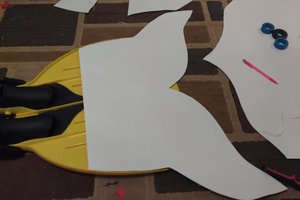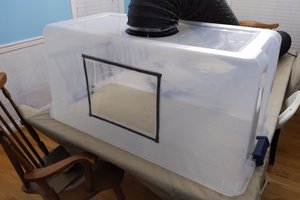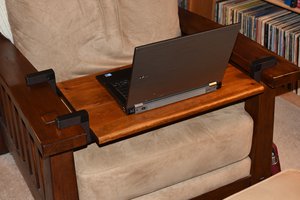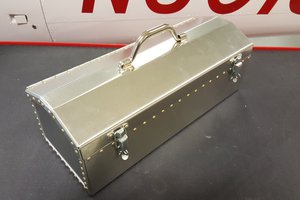This build was largely dictated by the parts I happened to have on hand. The base was tucked under a bed to the extent possible, but one foot remained where I might step on it, so I bolted another angle iron to the end of this foot to make it broader and thus less agonizing if stepped on. I also put a throw rug over it for good measure. The sharp corners of the angle iron were made safe by dog-earing them underneath using a channel wrench, which is not difficult. Any remaining burrs were filed. The shortest foot was an afterthought for stability and was made from a steel bracket instead of angle iron. Initially, the glide on the end was in the air, so I lowered it by adding a short piece of angle iron and using relatively long bolts with extra nuts as spacers. The long inclined member was made by bolting three 3-foot pieces together. Every third round hole was circled with a felt-tipped marker to indicate where to hang the garments to ensure even spacing and thus good air circulation. The base is weighed down by 4 pavers salvaged from a local construction site, after asking the crew permission. The pavers were housebroken by brushing and then spraying liberally with 0.2% bleach (to rinse and disinfect simultaneously) while they stood on a storm drain grille, followed by air-drying on the curb.
By the way, to tub-wash your own clothes, you will also need a second shower-curtain rod down the middle of the stall to hang your clothes from while they are still dripping, and a mop handle to stir them while they are in the tub. Pull up a chair to stir from. I use 4 minutes of stirring for the wash and 4 minutes for the rinse, each followed by wringing (without twisting) by hand. I use an old-fashioned cork for the tub drain, bought at a store that sells wine-making supplies.
04-21-2023: This project has been disassembled in order to build a fire escape means for my apartment, which could be 100 years old.
RIP.
 David Matthew Mooney
David Matthew Mooney
 Quinn
Quinn
 Scott
Scott
 Bharbour
Bharbour
 BreeStephany
BreeStephany